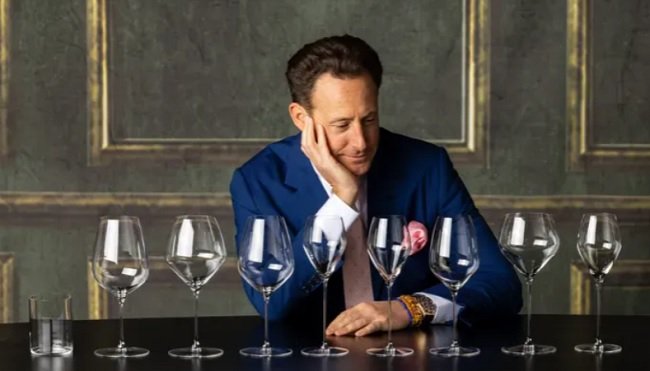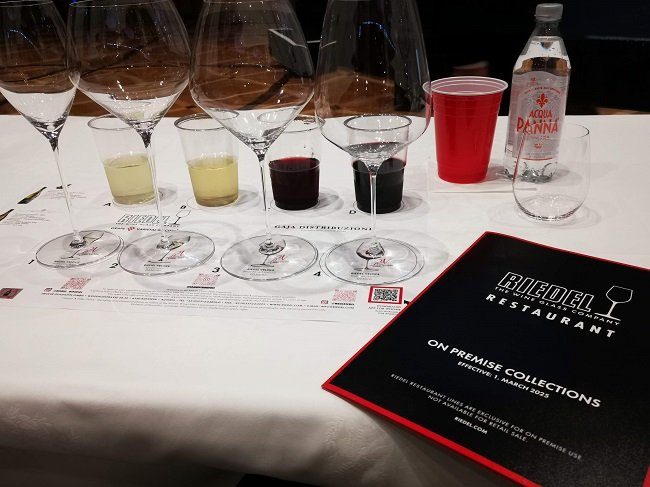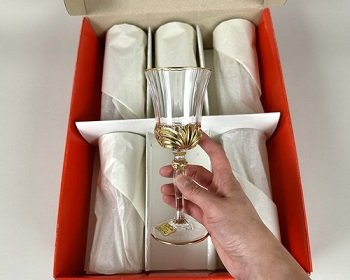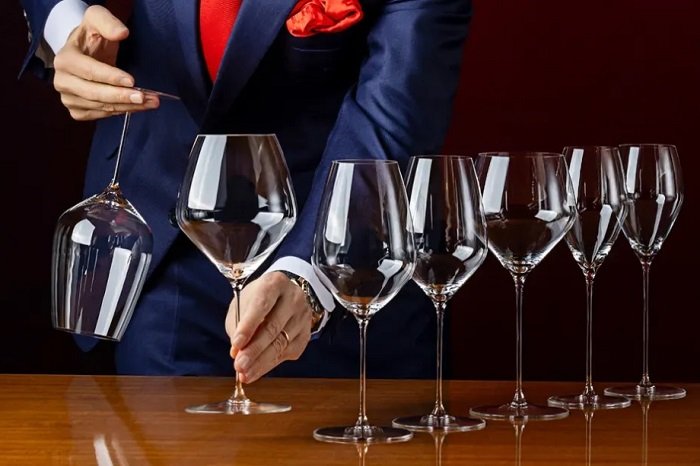When we sip a wine, we are all caught up in understanding its pleasantness and organoleptic characteristics. However, we should also pay attention to the glass in which it is served. Iolanda Maggio advises us from personal experience.
Have you ever wondered how important is the glass you use when tasting a wine? When we didn’t like a wine we always blamed the producer, the vintage, the type, the serving temperature. But have we ever wondered if maybe it was served in the wrong glass? How much does the right glass matter?
This was discussed during the Riedel Wine Experience that was held at the Rome Cavalieri, organized in collaboration with Gaja Distribuzione. The meeting was most interesting and the explanation of Maximilian Riedel, 11th generation of the world’s oldest glassmaking company, passionate and informative (follow his Instagram page which is a hoot).
The right glass for every wine

Just as in music and sports, it takes many elements to create a star performer, talent, study, team and the perfect equipment. Here it also works the same way in the tasting world. It takes the talent of the producer, the team and the perfect goblet to enhance all the characteristics the wine has to show. The chalice as a tool that is the result of careful and rigorous study both in terms of the function it must play in enhancing the quality of the wine and from an aesthetic point of view. Essential and elegant.
Riedel was founded in 1756 but it was in 1957 that it specialized in creating tasting glasses. Immediately becoming the reference brand for wine connoisseurs, hospitality professionals and discerning customers around the world. Thanks to the successful combination of precision craftsmanship and innovative design produces goblets, tumblers, decanters and specific lines for every professional or amateur need.
Four glasses for four wines

Before us is a set of four goblets from the collection Riedel Veloce. Sauvignon Blanc, Chardonnay, Pinot Noir/Nebbiolo, and Cabernet/Merlot. The names of the varieties written on the base of the super-thin-stemmed, super-lightweight glass. As in, when class is not “water.”
Four wines in front of us: Marlborough Sauvignon Blanc 2023 Palliser Estate, Puligny Montrachet Chardonnay 2022 Domaine Alain Chavy, Barolo Dragomis 2020 Gaja, and Bolgheri Magari 2021 Ca’ Marcanda (also by Gaja).
We tried to taste the individual wines by changing glasses, and what a difference!

The Sauvignon Blanc not aged in barrel, for example, needs a goblet with a smaller opening that forces the head to be brought back so that in drinking the tongue is naturally the first part that has contact with the wine. In this way we have the enhancement of fruit flavors, saline and citrus tastes. The acidity is balanced in the sip by the glass itself. In contrast, trying the same wine in the broader, more flattened Chardonnay goblet, the acidity and citric note overpower the fruit making the wine more hostile so much so that it almost seems like something else.
Lo Chardonnay on the other hand, served in the dedicated goblet, shows the extraordinary creaminess one expects from this wine. The delicate notes of vanilla, but also the beautiful saline freshness. Everything in balance as in a yoga pose. The same wine served in the “wrong” goblet loses much of its pleasantness and does not entice one to continue tasting.
The same tests done for the Nebbiolo and for the Bordeaux blend of Bolgheri have pointed out the same things. Fantastic wines tasted in the least suitable glass do not give the same results in terms of performance. The bouquet, taste, balance and finish of a wine are all affected by the shape of the glass in which it is consumed. A wine manifests completely different characteristics when served in different glasses.
The wine glass is not a minor detail
 Considering also the fact that the general public of wine enthusiasts has an increasingly high level of knowledge and attention, it is very important to give due weight to this which is not a mere detail but an element that has an essential place in the tasting experience. The importance of the right wine glass is perhaps talked about too little.
Considering also the fact that the general public of wine enthusiasts has an increasingly high level of knowledge and attention, it is very important to give due weight to this which is not a mere detail but an element that has an essential place in the tasting experience. The importance of the right wine glass is perhaps talked about too little.
It sounds trivial but it is not if we think that until the 1980s tasting glasses were not at all the shape we are used to seeing today but had that silhouette with the mouth widened outward like an upside-down bell. One was as good as the other for any wine.
So when we are next seated in a wine shop or at a restaurant table and are presented with the wine list we would do well to also pay attention to what glasses they will be served in. Try it to believe.





